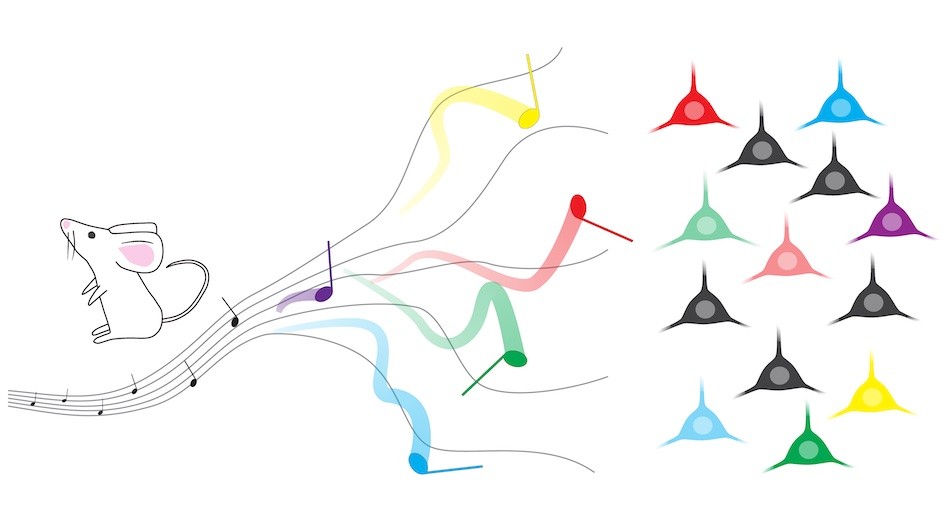2025-02-10 コロンビア大学

The illustration represents how sounds are encoded in the cerebral cortex, with neurons (at right) using “echoing” activity to track auditory stimuli to change and improve its predictions of the future. (Yuriy Shymkiv)
<関連情報>
- https://news.columbia.edu/news/how-does-brain-differentiate-new-stimuli-old-ones
- https://www.cell.com/neuron/abstract/S0896-6273(25)00037-6
遅い皮質ダイナミクスが文脈処理と新奇性検出を生み出す Slow cortical dynamics generate context processing and novelty detection
Yuriy Shymkiv∙ Jordan P. Hamm∙ Sean Escola∙ Rafael Yuste
Neuron Published:February 10, 2025
DOI:https://doi.org/10.1016/j.neuron.2025.01.011
Highlights
•Multidimensional encoding of stimulus temporal context by neuronal ensembles
•Stimulus statistics and complexity drive cortical areal representation of novelty
•Cortical responses have slow dynamics and historicity, which encode stimulus context
•Recurrent neural networks recapitulate biological findings, generating novelty detection
Summary
The cortex amplifies responses to novel stimuli while suppressing redundant ones. Novelty detection is necessary to efficiently process sensory information and build predictive models of the environment, and it is also altered in schizophrenia. To investigate the circuit mechanisms underlying novelty detection, we used an auditory “oddball” paradigm and two-photon calcium imaging to measure responses to simple and complex stimuli across mouse auditory cortex. Stimulus statistics and complexity generated specific responses across auditory areas. Neuronal ensembles reliably encoded auditory features and temporal context. Interestingly, stimulus-evoked population responses were particularly long lasting, reflecting stimulus history and affecting future responses. These slow cortical dynamics encoded stimulus temporal context and generated stronger responses to novel stimuli. Recurrent neural network models trained on the oddball task also exhibited slow network dynamics and recapitulated the biological data. We conclude that the slow dynamics of recurrent cortical networks underlie processing and novelty detection.


